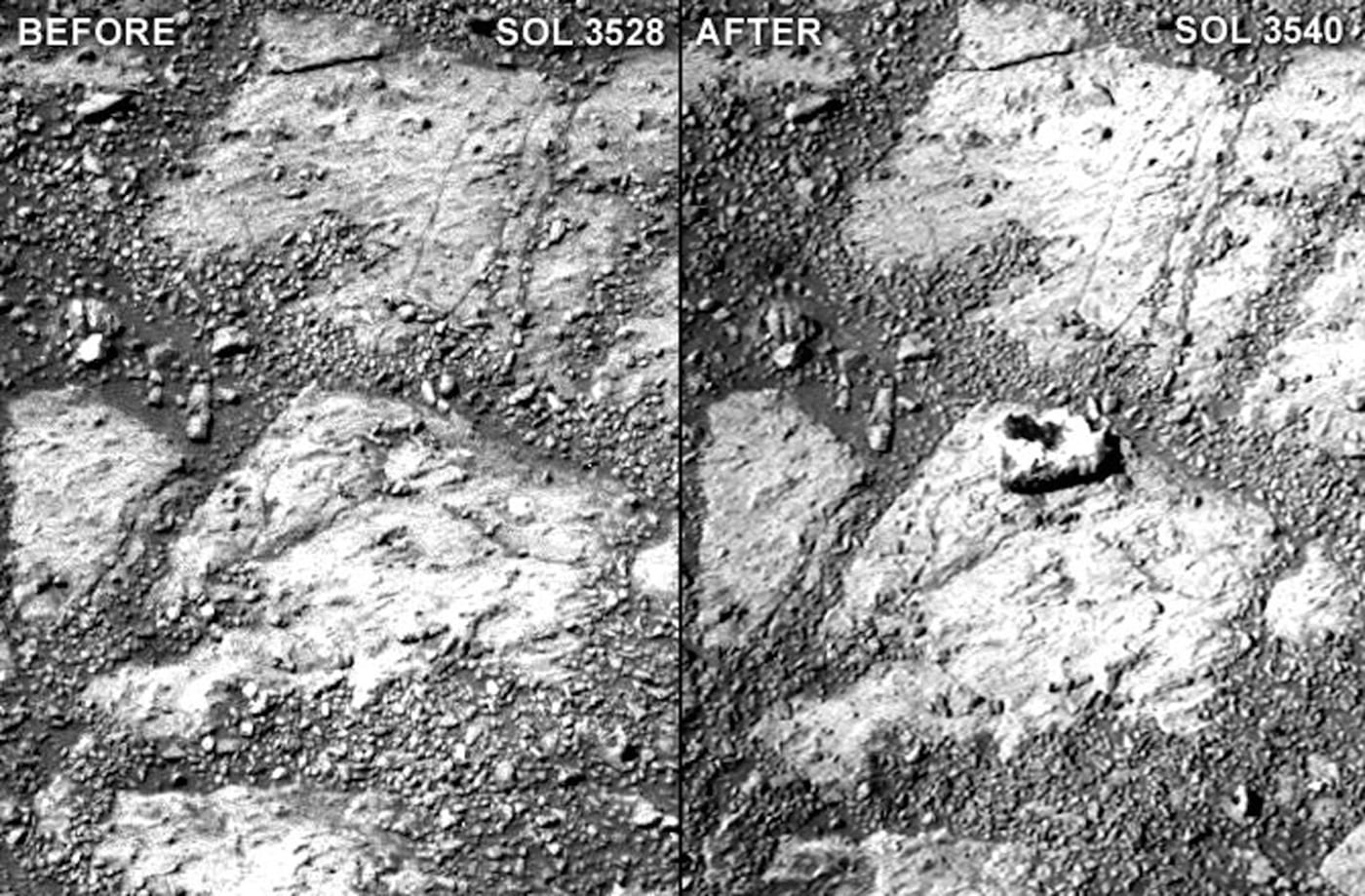Almost 10 years ago, Opportunity found what NASA nicknamed “blueberries” on Mars — small, iron-rich spheres that littered the planet’s surface and hinted at the presence of ancient water. Now the veteran rover is celebrating a decade of operation with its discovery of a mysterious “jelly doughnut rock.”
The pastry-sized rock, strangely appearing where there was nothing days earlier, is unlike anything scientists have ever seen before on the Red Planet.
“It’s white around the outside, in the middle there’s kind of a low spot that’s dark red: It looks like a jelly doughnut,” said Cornell University astronomer Steven Squyres, the principal investigator of Mars Exploration Rover Mission. He announced the finding last week at a celebratory event at the California Institute of Technology in Pasadena to honor the rover’s decade anniversary.
The rock turned up a few weeks ago on the rim of Endeavour Crater, a spot called Murray Ridge, where Opportunity is spending its sixth Martian winter. Before-and-after photos show the same patch of ground, riddled with pebbles and craggy stone. But the after photo, taken 12 days later, depicts the stark arrival of a white-and-maroon oddity.
“It appeared — it just plain appeared at that spot,” Squyres said. NASA has dubbed it “Pinnacle Island.”
He has two theories about how the rock got there. One possibility is that a nearby impact could have flung a piece of debris Opportunity’s way. Or, in what Squyres believes is the more likely explanation, one of the rover’s six wheels flicked it up out of the ground.
Scientists believe that Pinnacle Island landed upside down, giving them a serendipitous glimpse of the underside of a Martian rock. The NASA team is closely inspecting its composition, but so far, this rock is nothing like others they have seen.
“We’ve taken pictures of both the doughnut part and the jelly part,” he said at the event. “We got our first data on the composition of the jelly yesterday.”
The dark-red portion has lots of sulfur and magnesium, as well as twice as much manganese as anything previously measured on Mars.
The team has also released new Opportunity results, published in the journal Science on Thursday, of an ancient clay-forming, subsurface aqueous environment at the site of Endeavour Crater. Some of the exposed rocks are the oldest materials investigated to date by Opportunity, from a time when Mars would have been habitable.



